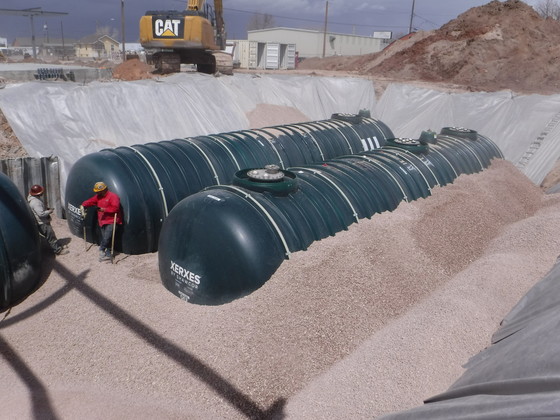 By Kristine Galloway
CHEYENNE – Wyoming’s Storage Tank Program (STP) has the highest compliance rate in the country.
That doesn’t sound exciting until you understand the significance of the accomplishment and what it means for Wyoming and its residents. Then, it’s fantastic!
The STP regulates active underground and aboveground storage tanks in the state to make sure no tanks are releasing fuel into the environment. As of June 30, 2021, there are 671 facilities in Wyoming that are regulated by the STP.
The Wyoming Department of Environmental Quality (DEQ) STP staff put in a lot of hours and a whole lot of drive time to keep up communication with those facilities and help them stay in compliance.
Oma Gilbreth, STP compliance supervisor, said, “One of the reasons why it’s been successful is because we have a good working relationship with the regulated community.”
Adrian Ducharme, STP manager, added that DEQ has an extensive database that keeps track of the inspections and data for every one of those facilities.
Wyoming boasts a 93% compliance rate with underground storage tanks. The most recent report released by the U.S. Environmental Protection Agency (EPA) regarding underground storage tank compliance shows an average national compliance rate of 57.8%. These numbers are from the most recent EPA report, which is based off numbers submitted in September of 2021.
Ducharme explained that underground storage tanks facilities often are gas stations with fuel tanks but also include any facility that uses an underground tank to store fuel, including emergency power generators at hospitals, nursing facilities, prisons, missile silos, etc.
DEQ’s STP regulates more than just underground storage tanks, however.
“We regulate more tanks than is federally required by the National UST Program because we also regulate aboveground storage tanks that sell to the public,” Ducharme said.
So, that 93% compliance rate refers only to the underground storage tank compliance because that’s the only number DEQ reports to the EPA. If DEQ reported the full compliance rate, the percentage would be even higher.
Ducharme said, “We’re seeing it on the backside too, because we’re getting fewer and fewer releases that will need to be cleaned up as a result.”
He explained that the STP staff focus on compliance for that reason – higher compliance means fewer releases of fuel into the environment and less money needed to clean them up.
“We’ve devoted quite a bit of energy to make sure that releases don’t happen in the first place. And if they do, they’re at least caught early and have been minimized as much as practical,” Ducharme said.
Much of that success can be attributed to STP staff maintaining great relationships with facility owners and maintaining that large database.
Utilizing the database, the STP staff sends notices to the facilities 90 days before their testing is due.
“There is no federal requirement for doing that. This is just an example of how we’re able to achieve these types of compliance rates,” Ducharme explained.
“That’s really what I would point to as a strength of our program is that we use the data that we get in a meaningful way.”
“And then we have an aggressive inspection schedule, so that we’re getting out to these facilities and making sure that everything is being adequately managed in real time.”
Federal grants require DEQ to inspect these facilities every three years, but the STP staff aim for every two years to ensure they have a buffer of time in case something happens that they have to reschedule or cannot get there. The STP staff completed 326 inspections between October 2020 and September 2021 with only two full-time inspectors.
Gilbreth said that if they do have to work with storage tank owners regarding problems with the tanks, they try to maintain an educational standpoint to avoid confrontation. In that way, the inspectors can show the owners that they are not out just to enforce regulations. In fact, they would like to help the owners learn how to avoid any releases or other compliance problems in the future.
Releases of fuel are bad for the environment, but they also hurt the pocketbooks of the owners because they cannot sell that released fuel.
Gilbreth noted that in many cases with convenience stores, the STP staff are not working with large industrial companies – they’re often smaller “mom and pop” stores that are locally owned. Building that good relationship is important.
Gilbreth works in storage tank compliance because he personally experienced the effects of storage tank releases as a child.
“I was raised in a small, rural town where a number of the town’s water wells were impacted by a leaking underground storage tank,” he said.
Gilbreth explained that the town was downgradient from a gas station that experienced a leak that contaminated water wells to the extent that they could smell the fuel in the water.
He and the other STP staff work hard to keep something similar from happening in Wyoming. And it’s catching on.
Ducharme said other states in Wyoming’s EPA region are looking at Wyoming’s methods.
“Utah recently took an approach of sending notifications to their active facilities about their testing dates, and sure enough, they observed an increase in their compliance rates when their inspectors went out into the field,” he said.
Ducharme said it was gratifying to hear that a neighboring state had adopted a similar practice to Wyoming’s and saw an increase in compliance rates.
|